Celebrating 50 Years
The National Center for Health Statistics (NCHS) is proud to celebrate 50 years as the Nation’s principal health statistics agency. NCHS compiles statistical information to guide actions and policies to improve the health of the U.S. population. We are a unique public resource for health information—and a critical element of public health and health policy.
At NCHS, information is at the core of our mission. I invite you to explore this brochure for a glimpse of who we are and what we do—and to use it as a guide to the wealth of resources we provide through our website and other avenues.
We work hard to continuously improve our products and services, and we are always interested in hearing how we’re doing and how we can do better. We welcome your comments and questions about our work, and I invite you to call upon us at any time.
Sincerely,
Edward J. Sondik, Ph.D.
Director
National Center for Health Statistics
Introduction
In 1960, the National Office of Vital Statistics and the National Health Survey merged to form the National Center for Health Statistics (NCHS). NCHS is one of 13 principal statistical agencies in the federal government. The Center has been located in a number of organizations within the Department of Health and Human Services (HHS), and since 1987 has been part of the Centers for Disease Control and Prevention (CDC).
Collaborating with other public and private health partners, NCHS employs a variety of data collection mechanisms to obtain accurate information from multiple sources. This process provides a broad perspective to help us understand the population’s health, influences on its health, and health outcomes. We collect data from birth and death records, medical records, interview surveys, and through direct physical examinations and laboratory testing.
Our health statistics enable us to
- Document the health status of the population and of important population subgroups.
- Identify disparities in health status and the use of health care by race or ethnicity, socioeconomic status, region, and other population characteristics.
- Describe experiences with the health care system.
- Monitor trends in health status and health care delivery.
- Identify health problems.
- Support biomedical and health services research.
- Provide information for changing public policies and programs.
- Evaluate the impact of health policies and programs.
Major NCHS Program Activities
NCHS conducts a broad program of data collection, analysis, and dissemination, in collaboration with colleagues throughout the public and private sectors in the United States and with governments across the globe.
To achieve our mission of providing information to guide actions and policies that improve health, we conduct a number of major data collection programs, which are summarized here. However, as important as data collection is to our mission, it is only one component of an overarching program to monitor the Nation’s health. NCHS also maintains an active program in research and methodology to address key issues in survey design, such as how best to take advantage of advances in technology for conducting surveys while upholding our solemn commitment to protect the privacy and confidentiality of survey respondents.
We work with colleagues in other federal statistical agencies to identify ways to adapt our surveys to a changing society, including how to respond to changes in the classification of race and ethnicity, how to measure complicated concepts such as functional status and disability, how to determine whether our survey questions are obtaining the desired information, and how to provide linkages among data collections conducted by multiple agencies to strengthen the power of survey results. In these and other efforts, we collaborate with our counterparts at the Census Bureau, the departments of Labor, Agriculture, and Justice, and other agencies, under the leadership of the office of the Chief Statistician of the United States within the Office of Management and Budget.
We work with colleagues at HHS and with other public- and private-sector entities to set and monitor health objectives through such programs as the Healthy People 2020 initiative. We also collaborate with the World Health Organization and other international organizations to develop and improve data standards and classification systems for coding functional status, disease, and cause of death.
NCHS conducts a myriad of data dissemination activities, including an extensive program of Research Data Centers throughout the country, to provide secure access to the fullest range of data at a greater level of detail than is generally releasable to the public. We develop and maintain interactive Web-based tools such as Health Data Interactive, for providing tables, data files, and reports. We also provide tutorials to guide users in accessing and using complex NCHS data sets such as those produced through our National Health and Nutrition Examination Survey.
NCHS Data Collection Programs
There are four major data collection programs at NCHS:
The National Vital Statistics System (NVSS) provides the Nation's official vital statistics data based on the collection and registration of birth and death events at the state and local levels. NCHS works in partnership with the vital registration systems in each jurisdiction to produce critical information on such topics as teenage births and birth rates, prenatal care and birth weight, risk factors for adverse pregnancy outcomes, infant mortality rates, leading causes of death, and life expectancy.
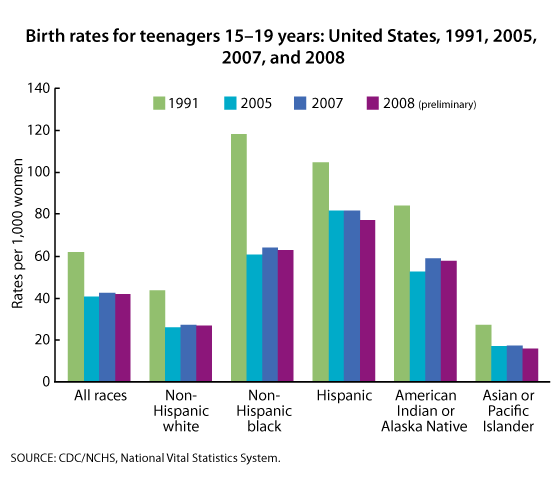
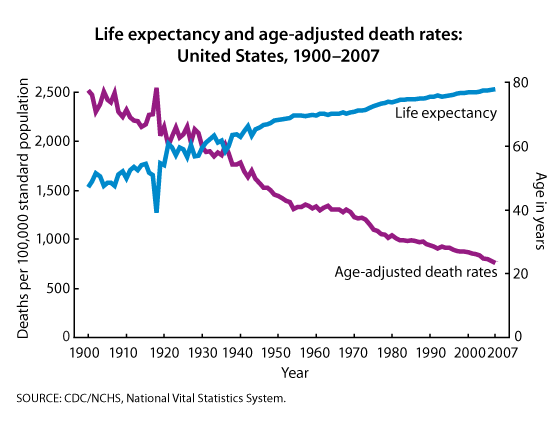
The National Health Interview Survey (NHIS) provides information on the health status of the U.S. civilian noninstitutionalized population through confidential interviews conducted in households by Census Bureau interviewers. NHIS is the Nation’s largest in-person household health survey, providing data on health status, access to and use of health services, health insurance coverage, immunizations, risk factors, and health-related behaviors.
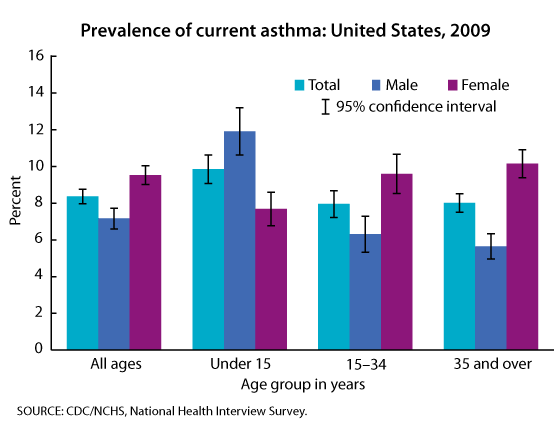
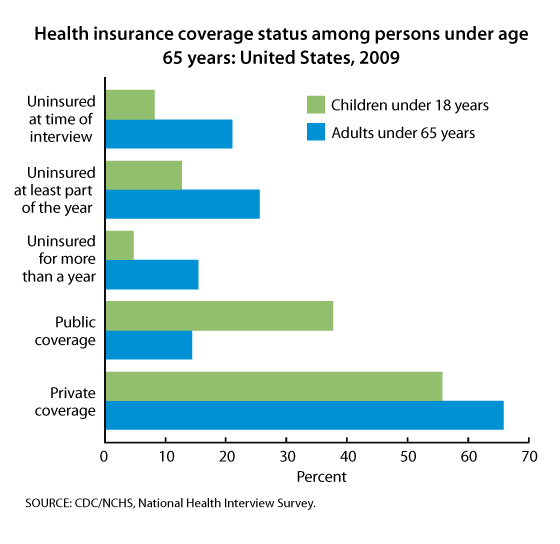
The National Health and Nutrition Examination Survey (NHANES) is NCHS’ most in-depth and logistically complex survey, operating out of mobile examination centers that travel to randomly selected sites throughout the country to assess the health and nutritional status of Americans. This survey combines personal interviews with standardized physical examinations, diagnostic procedures, and laboratory tests to obtain information about diagnosed and undiagnosed conditions; growth and development, including overweight and obesity; diet and nutrition; risk factors; and environmental exposures.

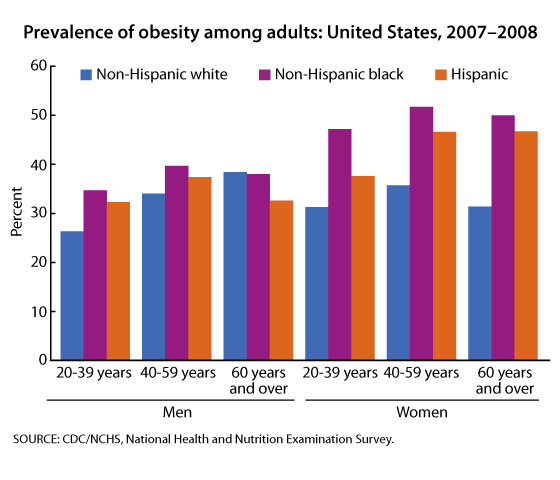
The National Health Care Surveys provide information about the organizations and providers that supply health care, the services they render, and the patients they serve. Provider sites surveyed include physician offices, community health centers, ambulatory surgery centers, hospital outpatient and emergency departments, inpatient hospital units, residential care facilities, nursing homes, home health care agencies, and hospice organizations. The National Health Care Surveys are used to study resource use, including staffing; quality of care, including patient safety; clinical management of specific conditions; disparities in the use and quality of care; and diffusion of health care technologies, including drugs, surgical procedures, and information technologies.
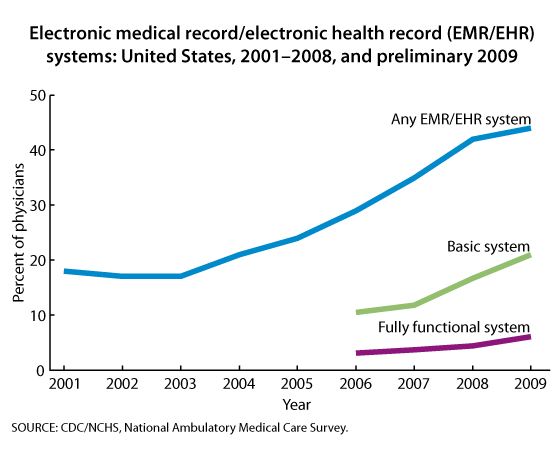
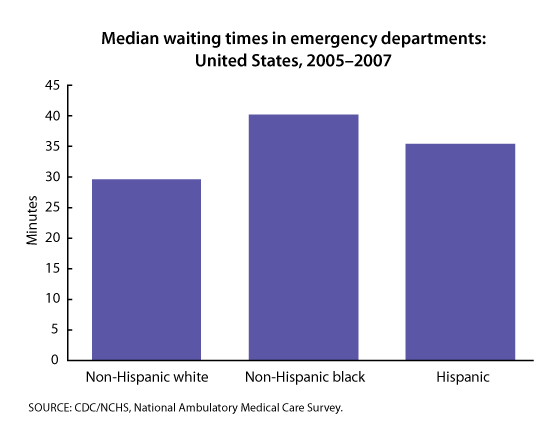
In addition to its major data collection programs, NCHS fulfills its mission by conducting targeted surveys and augmenting survey data where possible. Our National Survey of Family Growth obtains information on factors affecting birth and pregnancy rates, adoptions, and maternal and infant health, and supplements the information obtained on birth certificates collected through the National Vital Statistics System. Our State and Local Area Integrated Telephone Survey (SLAITS) allows us to produce state-level data on such topics as the health of children with special needs, to meet the data needs of our colleagues in HHS’ Maternal and Child Health Bureau and elsewhere. We conduct the National Immunization Survey in collaboration with our CDC Atlanta colleagues. NCHS periodically conducts longitudinal components to our major ongoing surveys, and we use our National Death Index to create a “longitudinal” component to our routine data systems. In our Questionnaire Design Research Laboratory, we develop and test data collection instruments for use in NCHS data collections and for surveys conducted by other federal agencies and research organizations. These and other activities are discussed in depth on our website.
Impact of NCHS Data Over the Years
For half a century, NCHS data have been instrumental in guiding health policy; assessing, monitoring, and improving the Nation’s health; and advancing research. Our data are used to inform the legislative process and are utilized by congressional support agencies (such as the Congressional Budget Office, the Congressional Research Service, and the Government Accountability Office) in developing reports and addressing issues of interest to Congress. NCHS data are used throughout the public and private sectors for a wide range of purposes, from health services research, to program planning and evaluation, to market research. Below are just a few examples of the impact of NCHS data over the years.
Guiding National Policy
NCHS data are used to set national priorities, develop policy initiatives, and track the outcomes of policy changes.
Health insurance coverage. In 2009, 21% of 18–64 year-olds currently lacked health insurance coverage.
Nutrition policy.Since the 1990s, intake of milk and dairy foods has improved, but intake of vegetables and whole grains has declined. NCHS data are used to recommend and evaluate food fortification decisions, to develop and evaluate the Dietary Guidelines for Americans, and to help set the recommended intake levels for vitamins, minerals, and other nutrients.
Environmental exposure. Exposures to lead and secondhand smoke in women of childbearing age and in young children continue to decline.
Cardiovascular disease mortality. The downward trend in heart disease and stroke death rates reflects changes in risk factors—a decline in cigarette smoking, a drop in cholesterol levels, and better control of hypertension.
Assessing the Health Care System
NCHS data are instrumental in monitoring changes in the delivery and use of health services.
Quality of care. Between 1995 and 2007, the number of antibiotic prescriptions written at physician office visits for children younger than 15 declined 20%.
Health information technology. In 2009, only 6% of physician offices had fully functional electronic medical record or electronic health record systems.
Burden on the health care system. In 2007, 23% of patients waited 1 hour or more to see a physician after their arrival at the hospital emergency department.
Cesarean deliveries. The rate of cesarean deliveries rose by 53% from 1996 to 2007, reaching 32%—the highest rate ever reported in the United States. Prior to this increase, cesarean rates had been declining as the risks for both mother and infant received public attention.
Monitoring and Improving Health Behaviors
NCHS data measure risk factors and guide efforts to promote healthy lifestyles.
Tobacco control. In 2009, about one-fifth (20.6%) of adults aged 18 and over were smokers. Overall, smoking among U.S. adults declined from 24.7% in 1997 to 20.6% in 2009.
Teenage births. The birth rate for U.S. teenagers aged 15–19 fell 2% in 2008, to 41.5 per 1,000, reversing a brief 2-year increase that had halted the long-term decline from 1991 to 2005.In 2006–2008, more than 4 in 10 teenagers reported having had sex.
Overweight and obesity. An estimated 34.2% of U.S. adults aged 20 and over are overweight, 33.8% are obese, and 5.7% are extremely obese, according to estimates for 2007–2008.
Contraception patterns. In 2006–2008, the oral contraceptive was the most frequently used form of contraception; 27% of women aged 15–44 used the pill, and an almost equal percentage used female sterilization. The condom is the leading method used at first intercourse.
Advancing Research Methodology
NCHS has helped to advance research in epidemiology, survey methods, and policy research.
Child and family health care needs. Research on children, conducted using the State and Local Area Integrated Telephone Survey (SLAITS) modules, has established the standard for other surveys that measure the existence of medical homes and the prevalence of children with special health care needs. The large SLAITS samples have provided opportunities to ask detailed questions of rare populations such as adopted children, children with autism spectrum disorder, and children with special needs who age into the adult health care system.
Disparities. NCHS documents disparities in all facets of health, using data from each of its data systems, and has developed innovative ways to measure disparities to determine whether and how they are changing.
Disability comparisons worldwide. NCHS led the way in creating and testing a short battery of disability questions designed to be used throughout the world. Use of this standard questionnaire will allow measures of disability to be compared across countries for the first time.
Impact of cell phone usage on telephone surveys. During the 1970s and 1980s, NCHS tracked the increasing ownership of household telephones and pioneered methods for using telephones to collect health data. During the past decade, the Center has tracked the now declining ownership of landline telephones and the rapid increase in the number of cell-phone-only households. One of every four American homes had only cell phones at the end of 2009, and NCHS has demonstrated that exclusion of these households from landline telephone surveys can lead to biased survey estimates for binge drinking, smoking, and other health risk behaviors.
Linked data files. NCHS pioneered the methodology for data linkage and developed a record linkage program designed to maximize the scientific value of the Center’s population-based surveys. Linked data files enable researchers to examine the factors that influence disability, chronic disease, health care utilization, morbidity, and mortality. Most NCHS population-based surveys link to the National Death Index or to Medicare claims data.
Survey methodology. Monitoring and improving data quality are key activities at NCHS. The NHIS now routinely releases “paradata” with its public-use microdata files. Paradata describe information obtained both passively and actively regarding the circumstances of the survey interview, such as the time it takes to read and respond to individual questions, the amount of effort expended to complete an interview, and the direction of progress through the interview. This information opens a window to the interview experience and is now used to assess nonresponse bias.
Q-Bank. Q-Bank is a database of evaluated questions from federal surveys that links each question to its test findings. Hosted by NCHS, Q-Bank is the product of an interagency collaboration to improve the quality and usefulness of survey data by sharing knowledge about survey questions.
NCHS program activities are described in greater detail on the NCHS website. This website—which we are constantly working to improve—allows users to learn about, and take fullest advantage of, the wealth of NCHS resources.
Contact us:
National Center for Health Statistics
/nchs/
Information requests contact:
Information Dissemination Staff
3311 Toledo Road, Room 5419
Hyattsville, MD 20782
Phone: 1-800-232-4636
cdcinfo@cdc.gov
Media representatives contact:
Public Affairs Staff
Phone: 301-458-4800
paoquery@cdc.gov
- Page last reviewed: November 6, 2015
- Page last updated: July 27, 2011
- Content source:


 ShareCompartir
ShareCompartir